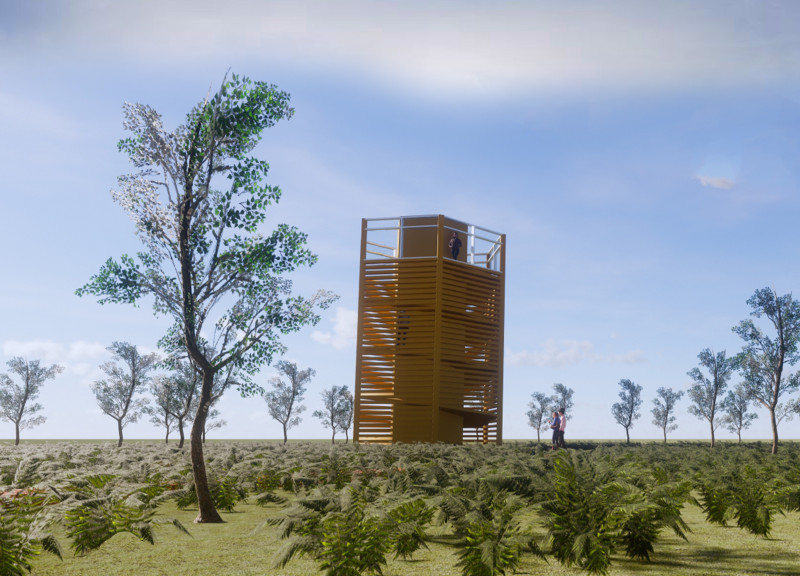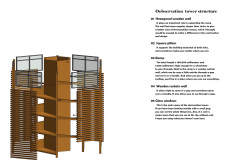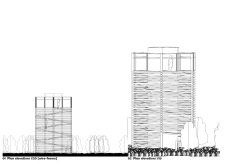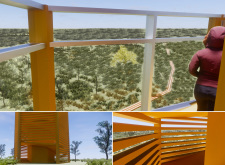5 key facts about this project
This architectural project is designed with a multifaceted purpose, intended to accommodate various activities while catering to the needs of a diverse user group. It may encompass spaces for social interaction, office environments, residential units, or cultural venues, depending on its specific function. The design showcases an approach that prioritizes user experience, interlacing public areas with private spaces to create a fluid, welcoming atmosphere. This balance between personal and communal spaces is exemplified through the careful layout of the interior, thoughtfully designed to encourage collaboration and socialization among its occupants.
The unique aspects of this architectural project are particularly visible in its materiality and form, which together enhance both the visual and practical elements of the design. A blend of sustainable materials is utilized throughout, such as concrete, timber, glass, and steel, each chosen for their durability and ecological credentials. The use of these materials not only contributes to the project's longevity but also promotes energy efficiency through thoughtful construction techniques—like passive heating and cooling, which are integrated into the structure. Additionally, natural materials such as reclaimed wood infuse warmth and texture into the spaces, reinforcing the project's connection to nature and the community.
The façade of the structure merits particular attention, showcasing a synergy between form and function. The architectural design implements a series of horizontal and vertical elements that provide visual intrigue while also serving practical purposes, such as providing shade and enhancing airflow. This attention to detail manifests in features like overhanging roofs and strategically placed windows, which draw natural light into the interior without compromising privacy. The design fosters an inviting presence in the urban landscape, creating a dialogue between the built environment and its surroundings.
The open floor plans within the project further enhance its versatility, allowing for adaptive use of space based on the shifting needs of its occupants. This flexibility is key as it supports various activities and occupancy levels, further reinforcing the project’s core ethos of adaptability. The design includes distinct gathering spaces, such as lounges and communal areas, which are intentionally placed to facilitate connections and foster a sense of belonging among users.
Landscaping plays a critical role in complementing the architectural design, seamlessly blending indoor and outdoor environments. Green spaces, patios, and terraces are integrated throughout, reinforcing the importance of nature in daily life and promoting outdoor activity. The landscape design is carefully curated with native plants to minimize water use and maintenance requirements while providing an aesthetically pleasing environment that encourages biodiversity.
In the realm of architecture, this project stands out for its thoughtful integration of sustainable practices aligned with contemporary design principles. The innovative use of materials, attention to ecological responsibility, and focus on community-centric spaces together contribute to an inviting and functional environment. By embracing natural elements and adaptable spaces, the project not only enhances the user experience but also serves as a model for future developments in urban architecture.
For those seeking a deeper understanding of the architectural concepts and elements present in this project, further exploration of architectural plans, sections, designs, and ideas is encouraged. Engaging with these materials will provide invaluable insights into the nuanced thinking that underpins this architectural endeavor.


























